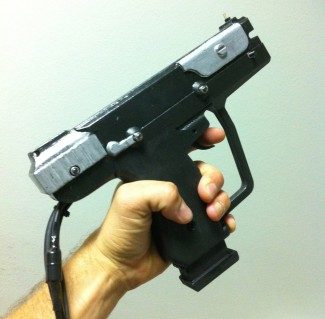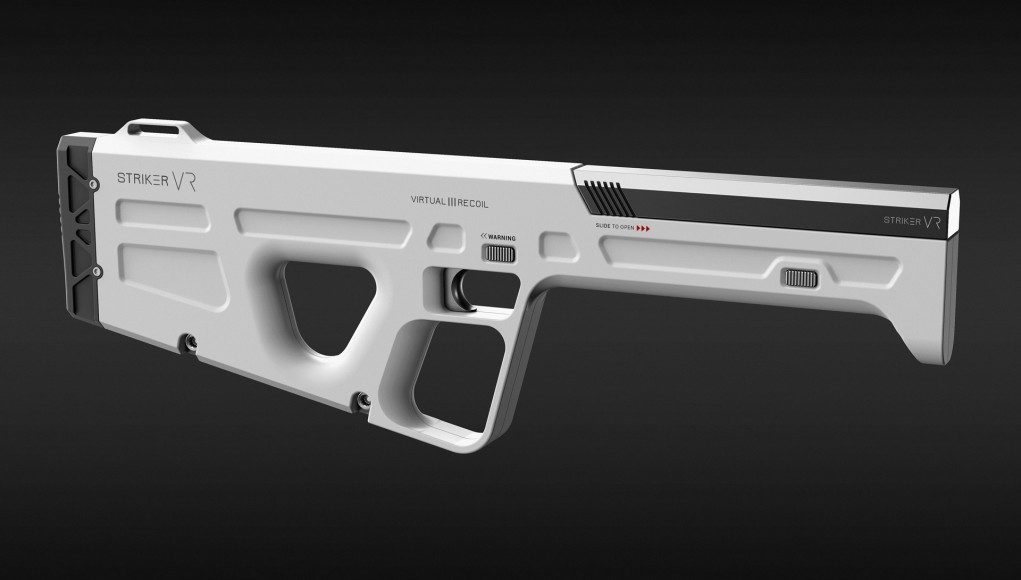Striker VR is moving ahead with their haptic gun technology that we’ve been anticipating for some time now. The company today has revealed their latest prototype design of the ‘ARENA Infinity’ which is headed first to out-of-home VR arcade installations.
10 Seconds of Testing Striker VR’s Gun Recoil System and I’m Sold. That’s the headline of the article I wrote after I first tried Striker VR’s haptic gun tech back in 2014. The feedback given by the system was incredibly compelling:
I’ve shot a number of real-life weapons from shotguns to pistols to rifles, so I have a good gauge when it comes to what gun recoil should feel like. And while it’s likely that we’ll never be able to perfectly simulate the recoil of a small explosive going off inside of a gun—without… well… setting off a small explosive inside of a gun—Striker VR has the most powerful and responsive recoil system that I’ve ever experienced.
At the time the company was building their virtual reality haptic feedback system into off-the-shelf replica guns (like airsoft), but now the company is moving toward manufacturing and have given us an exclusive look at the prototype design of their first product, the Arena Infinity, for the out-of-home market.
[gfycat data_id=”LonelyAptLadybird” data_autoplay=true data_controls=false]
Striker VR worked with concept designer Edon Guraziu (whose website is chock full of similarly awesome concept designs) to define the look and feel of the Arena Infinity. The company tells me the first functional prototype based on the design is being built now.

The Arena Infinity is a wireless peripheral that’s designed for out-of-home VR attractions like The Void and Zero Latency. For now it’s a BYOT (bring your own tracking) affair, and Striker VR says that partner PhaseSpace will be among the first to get their hands on the haptic peripheral to show it working with their tracking system.
Striker VR co-founders Martin Holly and Kyle Monti tell me that they want their peripheral to be a haptic doorway into the virtual space that can do more than just simulate the feeling of a contemporary gun. They want to open their haptic module to arbitrary feedback from the environment, for instance, making it shake when there is a nearby explosion.
The video below shows the company experimenting with several different haptic effects that can be achieved with their tech; in order: single shot, out-of-ammo, three round burst, chain saw (yes please), pulse rifle (also yes). Note that while some of the sounds you’re hearing are from the haptic system, there’s also sound effects playing through speakers off-screen.
Striker VR say they plan to create a consumer facing version of their peripheral, but the major roadblock right now is finding a practical way to integrate tracking. They want to avoid the cost and complexity of a proprietary tracking system, and instead integrate into the same systems that are already tracking VR headsets and controllers, like Oculus’ ‘Constellation’ and Valve’s ‘Lighthouse’. However, neither company has officially opened their tracking systems for third-party use despite saying that they plan to. Previously the company showed their technology working with the Sixense STEM tracking system.
Once the path becomes clear for integrating consumer tracking, the company says they may take the project to Kickstarter to get the consumer version off the ground.







